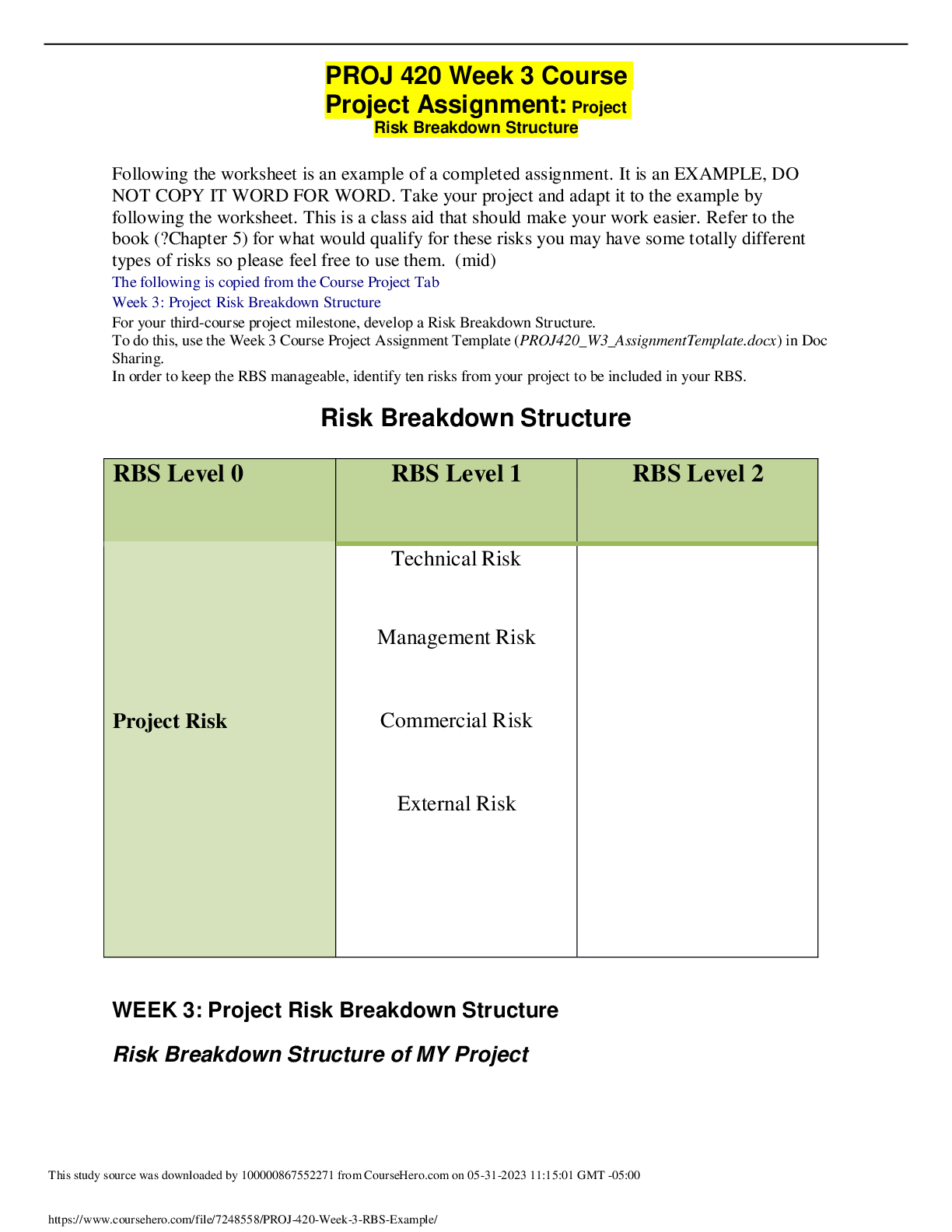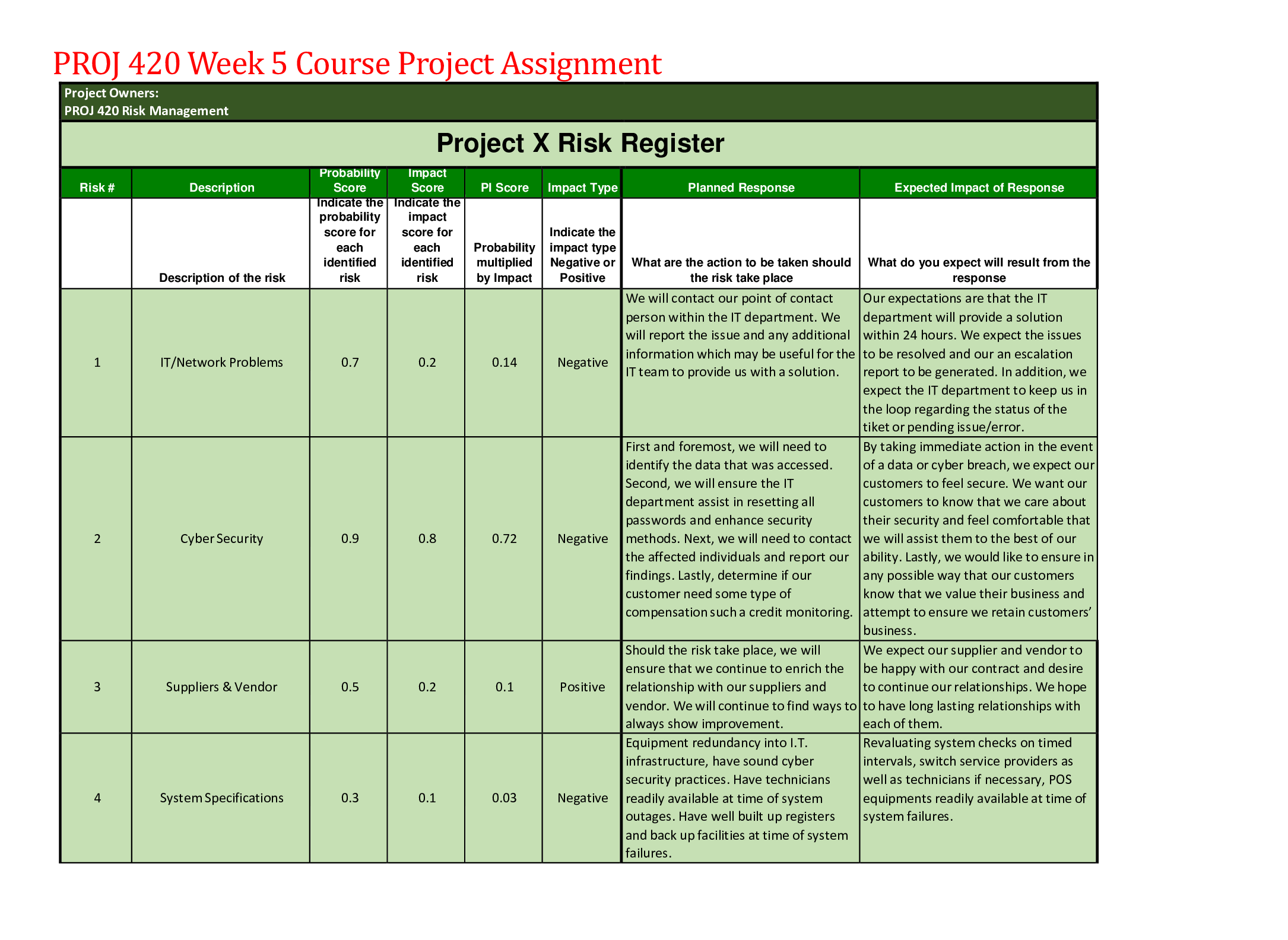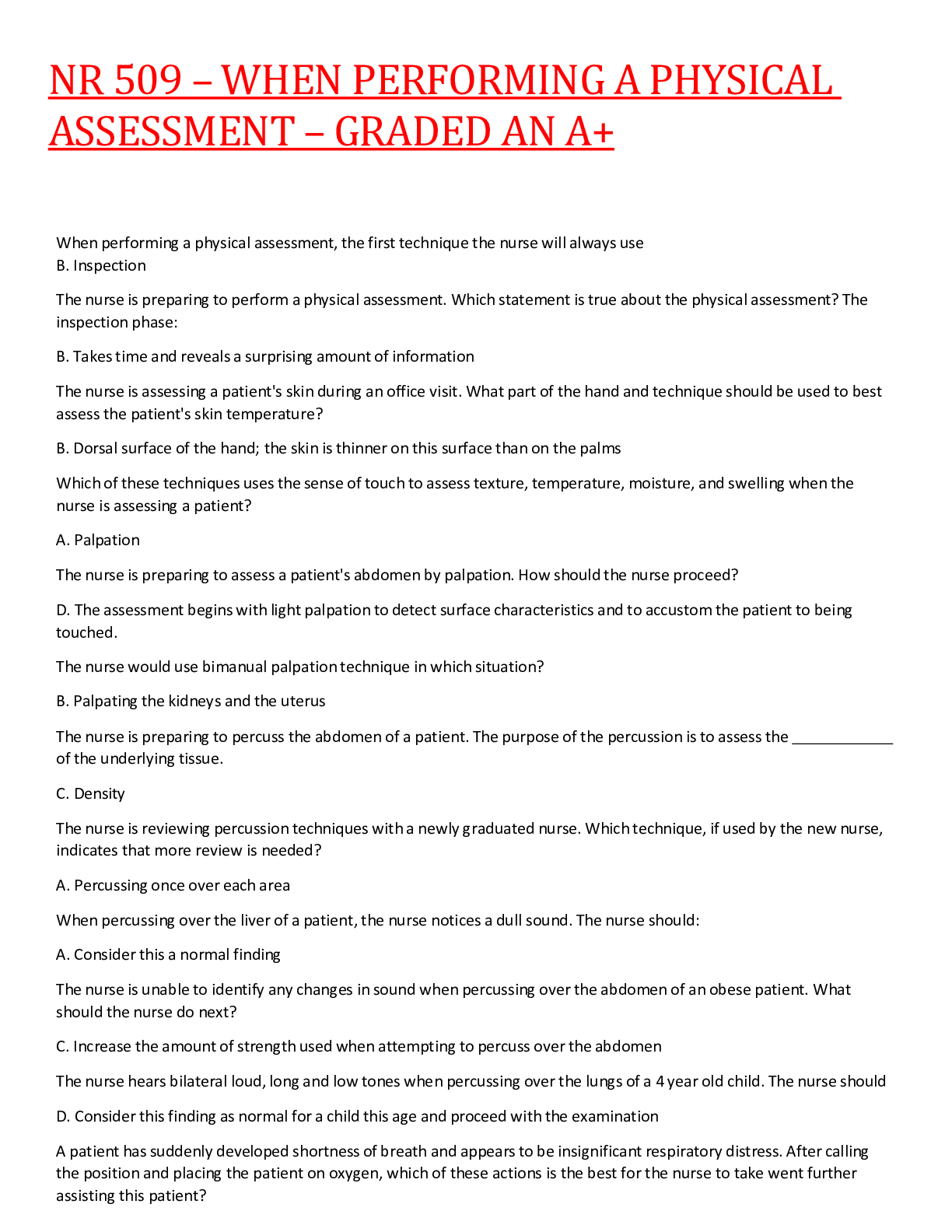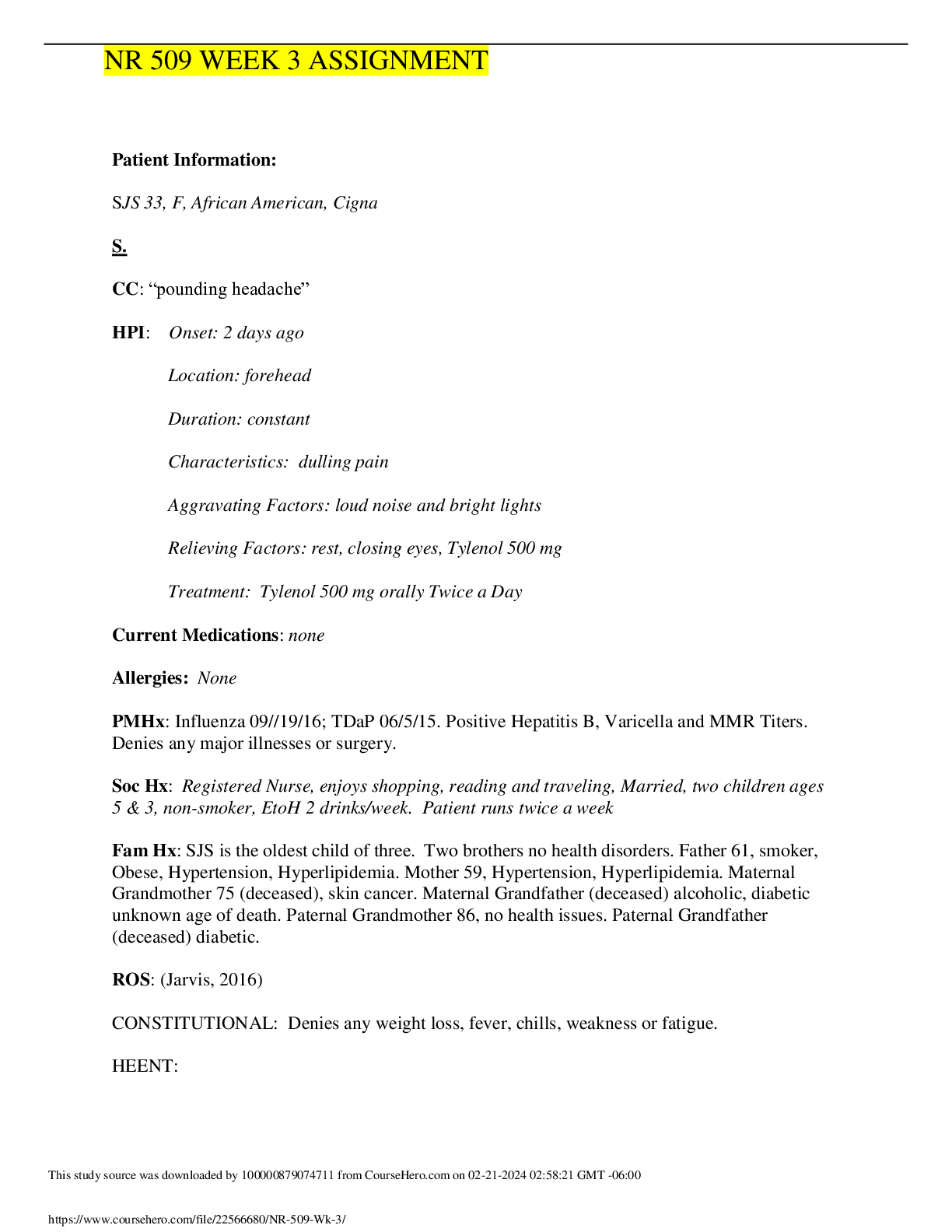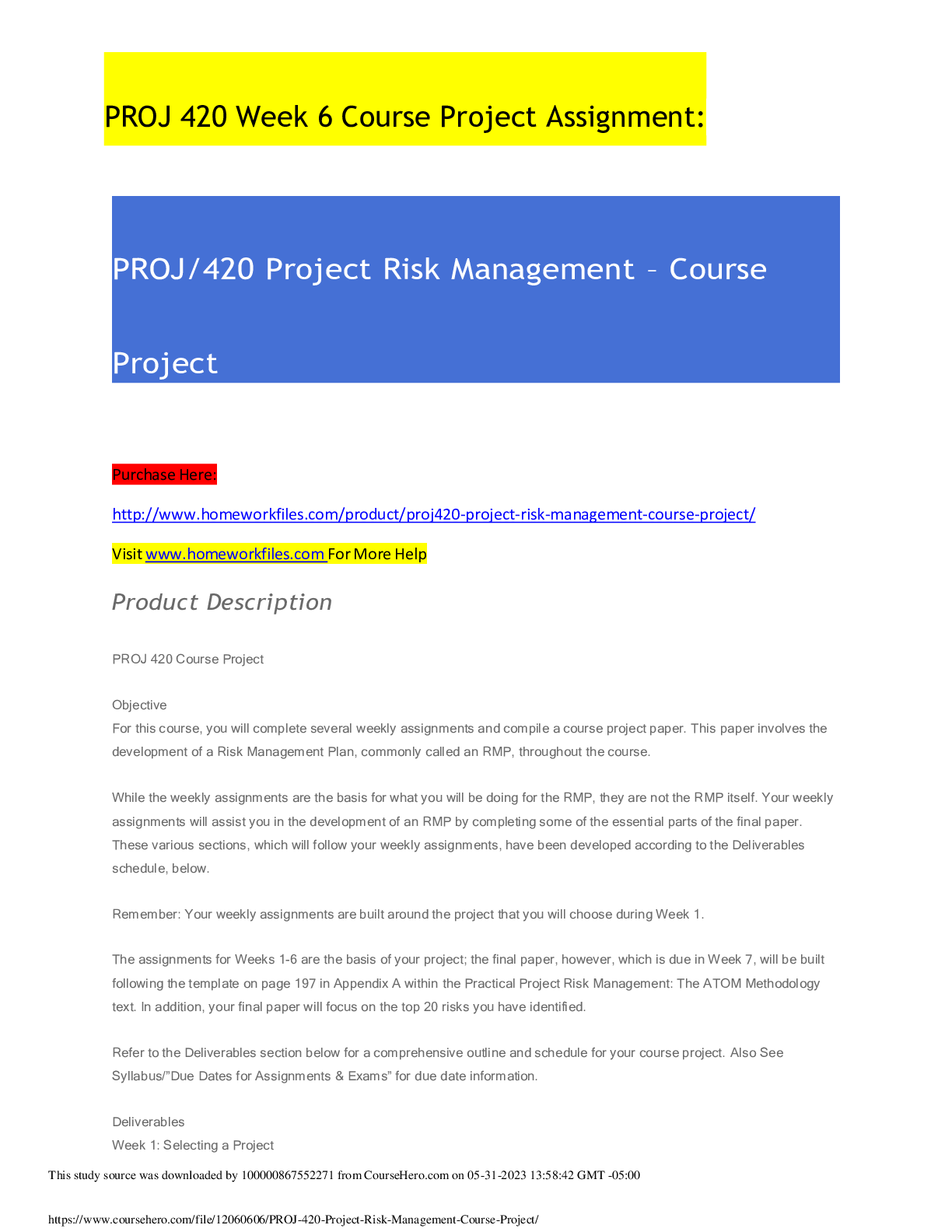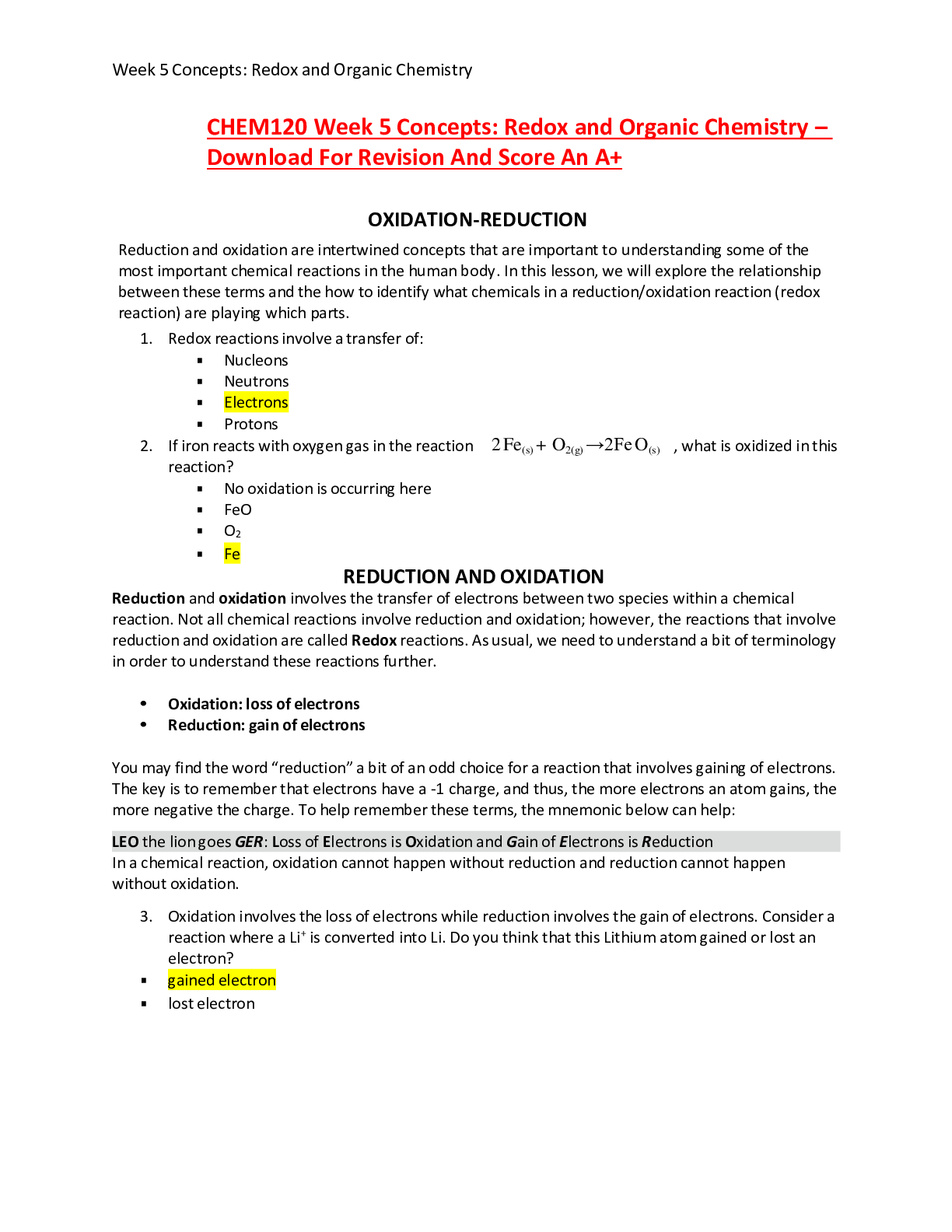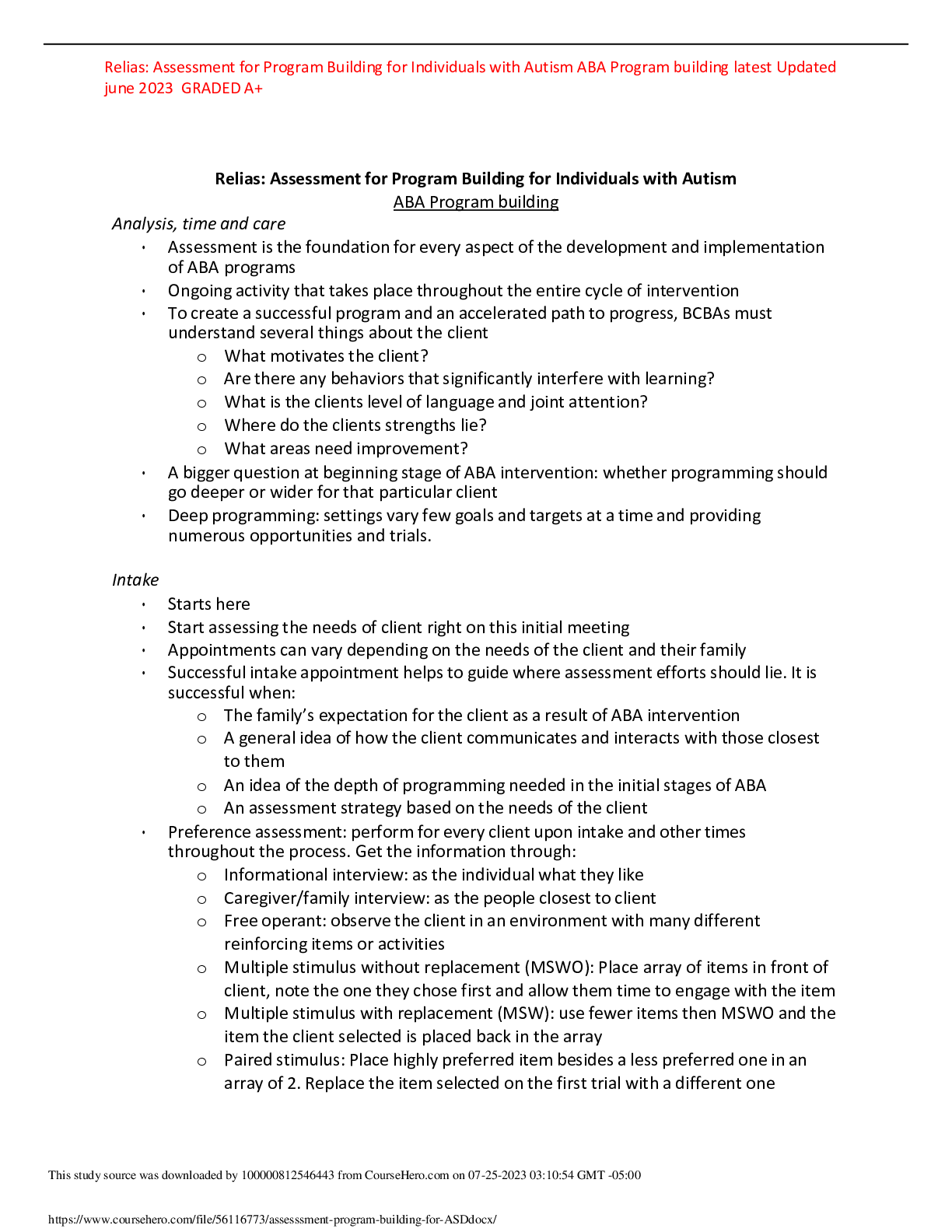*NURSING > ASSIGNMENT > BIOS-255 Week 4 Virtual Lab: Lymphatic System – Download For An A+ (All)
BIOS-255 Week 4 Virtual Lab: Lymphatic System – Download For An A+
Document Content and Description Below
BIOS-255 Week 4 Virtual Lab: Lymphatic System – Download For An A+ Learning Objectives: 1. State the components and functions of the lymphatic system 2. Trace lymphatic drainage through the m... ajor vessels of the lymphatic system. 3. Identify the mechanisms that cause movement of lymph through the lymph vessels. Introduction: The lymphatic system consists of lymphatic fluid, lymphatic vessels, lymphatic tissue, and lymphatic organs located throughout the tissues of the body. It functions to drain excess interstitial fluid from the tissues, to initiate an immune response against disease by producing and transporting lymphocytes, and to transport dietary lipids absorbed by the gastrointestinal tract into the blood. Let’s explore this system that can be found in so many different places and perform multiple roles! Assignment Part 1 Complete the activities on Anatomy.TV for the Lymphatic System: Introduction, Vessels and Circulation, Organs and Tissues. To access Anatomy.TV: Resources tab>Library>Library Resources-Database A- Z>Anatomy.TV>Titles(default tab): Choose assigned system>choose assigned sections You will then work through the material and activities by scrolling down on the right. This will allow you to see and work through all activities for that section. Part 2: Complete the lab report. Lymphatic System Lab Report 1. Purpose: Please state the purpose of the lab. This lab aims to understand the lymphatic system by recognizing the types of organs in the human body. I also learned where the spleen, thymus, tonsils, appendix, lymph nodes, lymphatic vessels, and lymphatic tissues are. Overall, I now understand how most of the organs work throughout the human body. 2. Procedure: Briefly discuss the procedure for this lab. • Recognizing the major lymphatic organs on pictures. • Identifying the components of lymphatic tissue. • Distinguishing the structures within a lymph node. • Recognizing the major lymphatic vessels. • Solving short answer questions about the lymphatic system. 1. Data and Details: a. List the 4 components of the lymphatic system described in the introduction. The lymphatic system consists of lymphatic fluid, lymphatic vessels, lymphatic tissue, and lymphatic organs located throughout the tissues of the body. b. List 2 primary organs of the lymphatic system Bone marrow. Thymus gland. c. List 3 secondary organs of the lymphatic system Diffuse lymphatic tissue. Spleen. Lymph nodes. d. List the 3 tonsils and their locations The palatine tonsils lie at the posterior region of the oral cavity, between the glossopalatine and pharyngopalatine arches. The pharyngeal tonsils are in the posterior wall of the nasopharynx. The lingual tonsils are located on the posterior surface of the tongue. 4. Questions: a. Describe 2 ways in which the intestines play a role in the lymphatic system. Defecation removes microbes from the body. Certain microbes may also trigger contraction of the intestines to cause diarrhea. b. Describe the structure and function of the thoracic duct. The thoracic duct is about 38-45 cm long and forms the largest confluence of lymphatic vessels in the body. It receives lymph from the left side of the body as well as the lower right side. c. What are the 2 mechanisms that allow movement of lymph through the lymph vessels? Skeletal and respiratory muscle pumps d. If someone has their spleen removed surgically what could be the clinical consequence? They body would not be able to break down and recycles old blood cells and produces white blood cells, which fight infection. 5. Discussion: a. Describe how the skeletal, digestive, cardiovascular, and lymphatic systems work together. Each system ensure that the body is receiving and getting rid of waste, disease and infection, and nutrients to function properly. b. Briefly mention any difficulties with the lab and/or information you wish was present in the lab. No difficulties took place while completing the lab. 6. Reflection: (10 points) Reflect on at least 2 key concepts you have learned from this lab. 2 key concepts I learn in this lab were the components and functions of the lymphatic system. I also got to learn about the different immunity our bodies use to protect itself from diseases and infections. Grading Rubric for Lab Report Activity Deliverable Point s Part 1 Complete lab activities/simulation 10 Part 2 Complete lab report and answer questions • Purpose (2 points) • Procedure (2 points) • Data and Details (5 points) • Questions (4 points) • Discussion (2 points) • Reflection (5 points) 20 Total Complete all lab activities 30 [Show More]
Last updated: 4 weeks ago
Preview 1 out of 5 pages
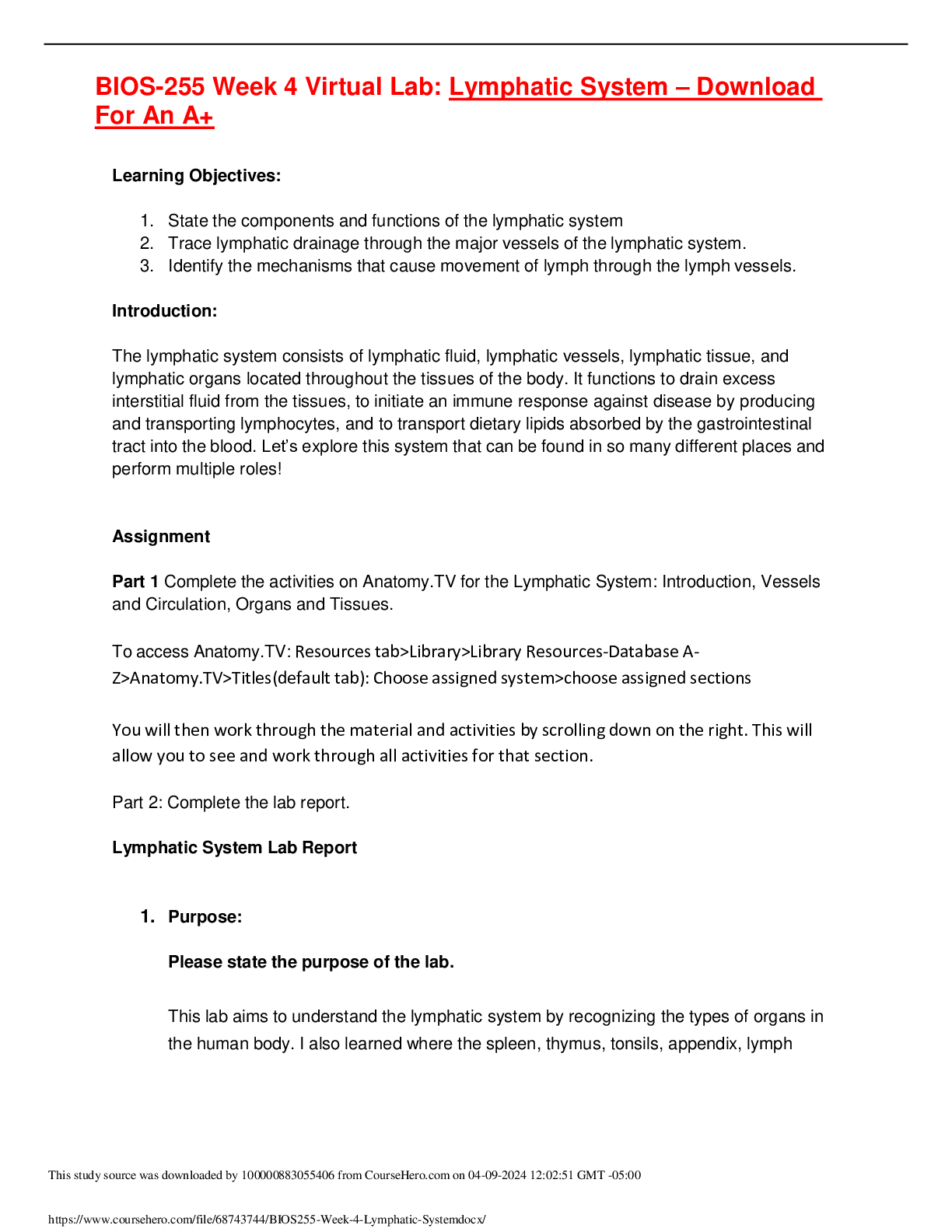
Reviews( 0 )
Document information
Connected school, study & course
About the document
Uploaded On
Apr 09, 2024
Number of pages
5
Written in
Additional information
This document has been written for:
Uploaded
Apr 09, 2024
Downloads
0
Views
11

